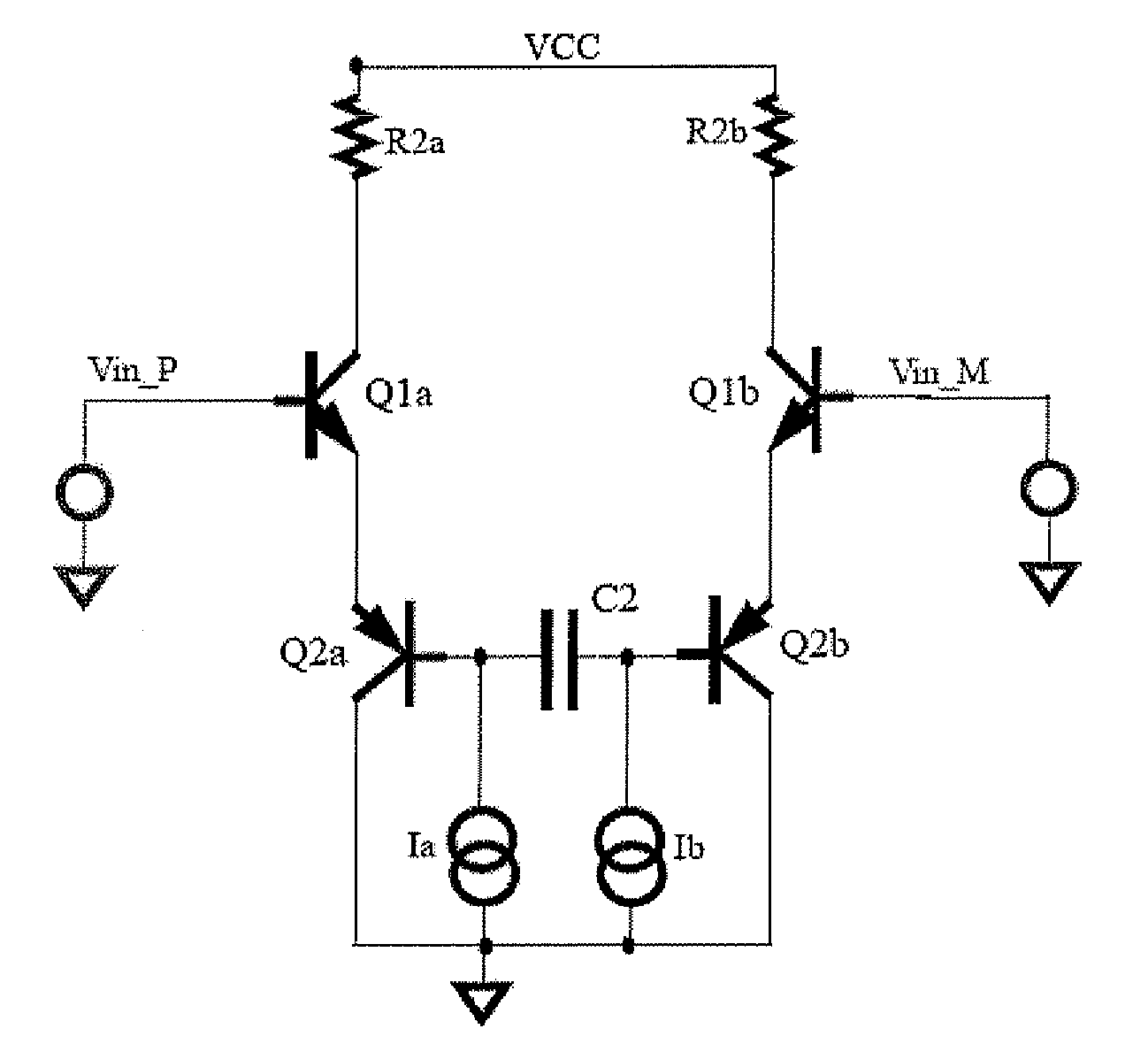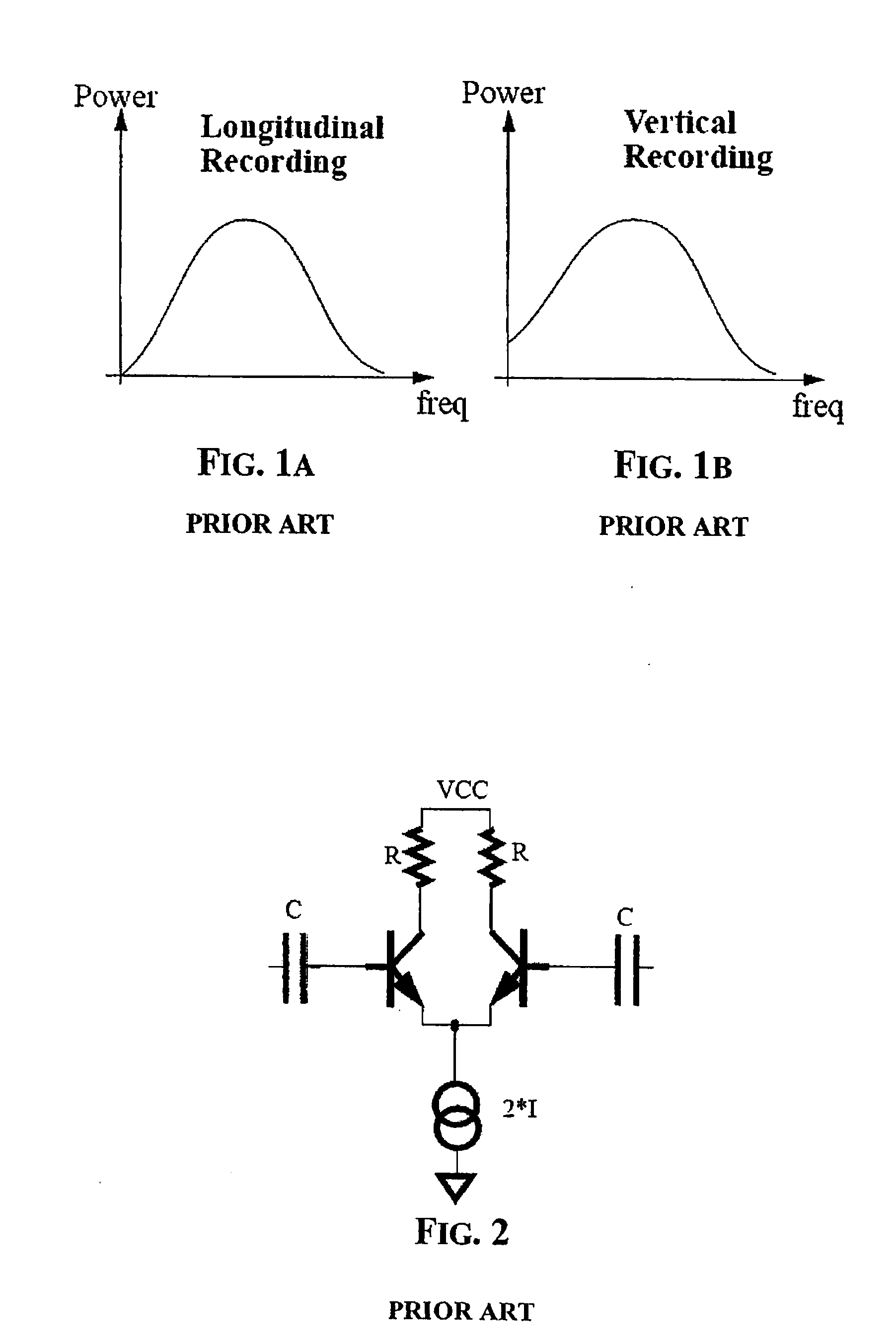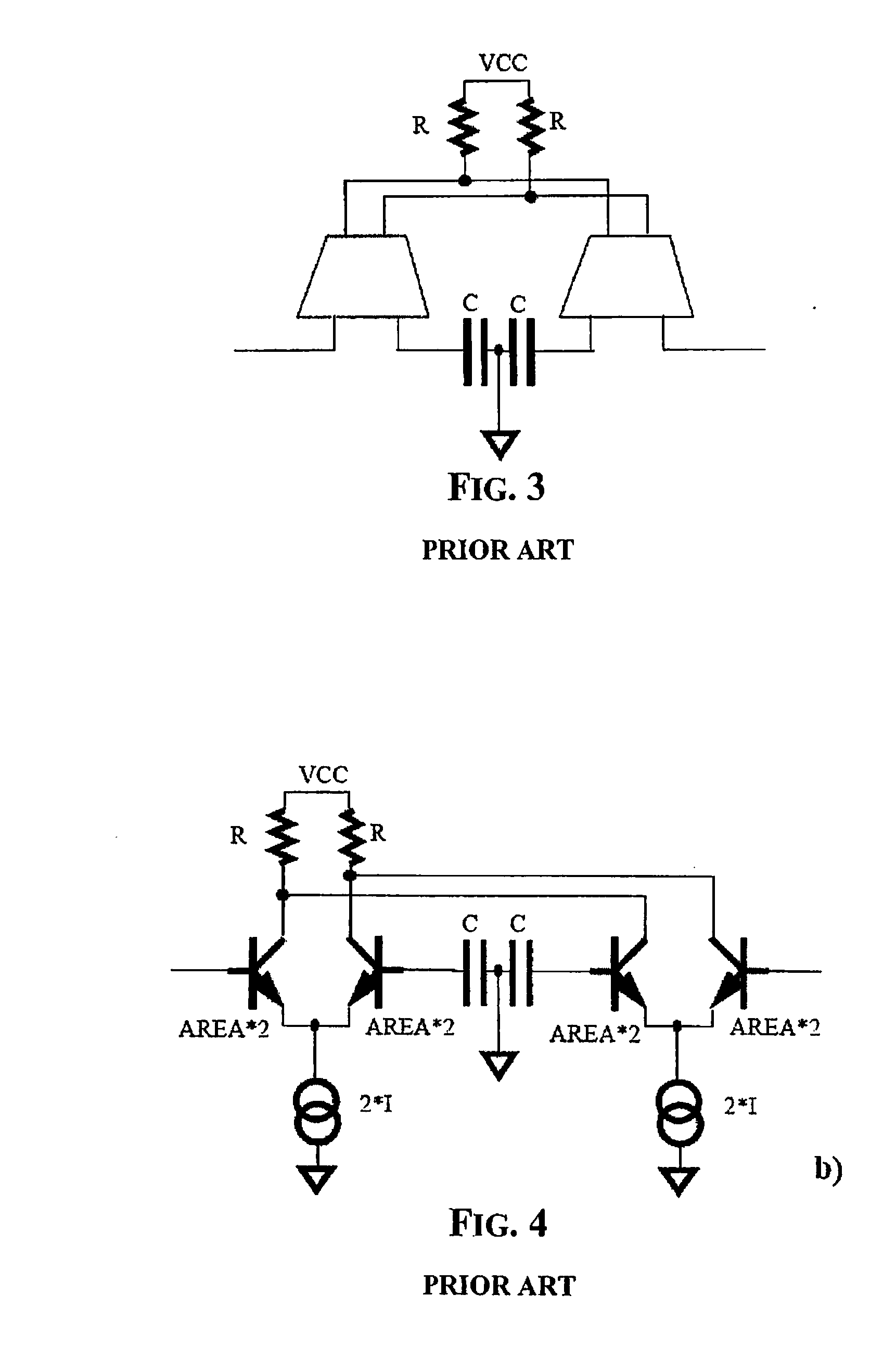Low noise ac differential amplifier with reduced low corner frequency and current consumption
a differential amplifier and low noise technology, applied in the field of low noise differential ac amplifiers, can solve the problems of significant increase, small input capacitance, and increase of cpb>1/b> and cpb>2/b> between, and achieve the effect of restrainting any increase in current consumption and small input capacitan
- Summary
- Abstract
- Description
- Claims
- Application Information
AI Technical Summary
Benefits of technology
Problems solved by technology
Method used
Image
Examples
Embodiment Construction
[0034]FIG. 5 depicts a first embodiment of the integrated AC amplifier with a small bias current. The proposed structure substantially includes a transconductance stage having a differential input pair of transistors Q1a and Q1b, that in the embodiment of FIG. 5 are two bipolar transistors NPN, connected to load resistors R2a and R2b, a second differential pair of transistors Q2a, Q2b, each biased by the same current that flows in the respective input transistor Q1a, Q1b. The transistors of the second differential pair Q2a, Q2b are biased by dedicated bias means or current generators Ia and Ib, as in the case shown in FIG. 4 are the current generators Ia and Ib.
[0035]Preferably, the currents Ia and Ib are fixed or controlled through a feedback loop for substantially nullifying the output offset voltage.
[0036]To better understand the functioning of the circuit of FIG. 5, let us refer to the single-ended circuit of FIG. 6a, that corresponds to a half of the integrated pre-amplifier. I...
PUM
 Login to View More
Login to View More Abstract
Description
Claims
Application Information
 Login to View More
Login to View More - R&D
- Intellectual Property
- Life Sciences
- Materials
- Tech Scout
- Unparalleled Data Quality
- Higher Quality Content
- 60% Fewer Hallucinations
Browse by: Latest US Patents, China's latest patents, Technical Efficacy Thesaurus, Application Domain, Technology Topic, Popular Technical Reports.
© 2025 PatSnap. All rights reserved.Legal|Privacy policy|Modern Slavery Act Transparency Statement|Sitemap|About US| Contact US: help@patsnap.com



